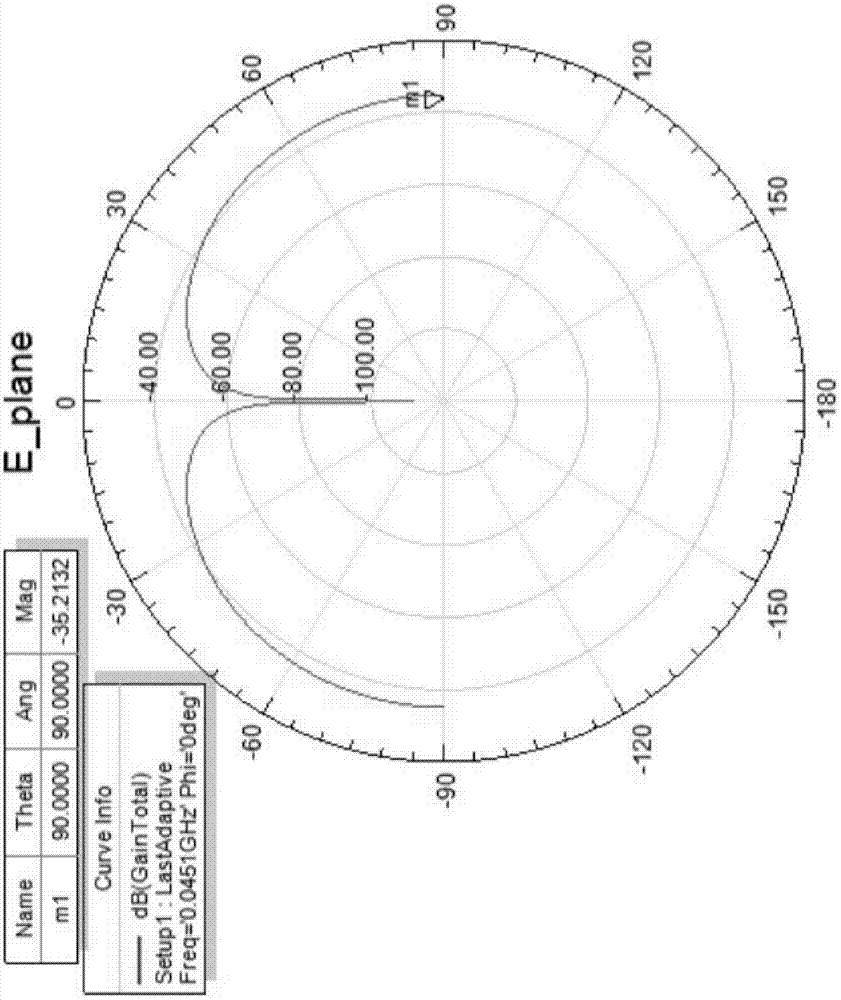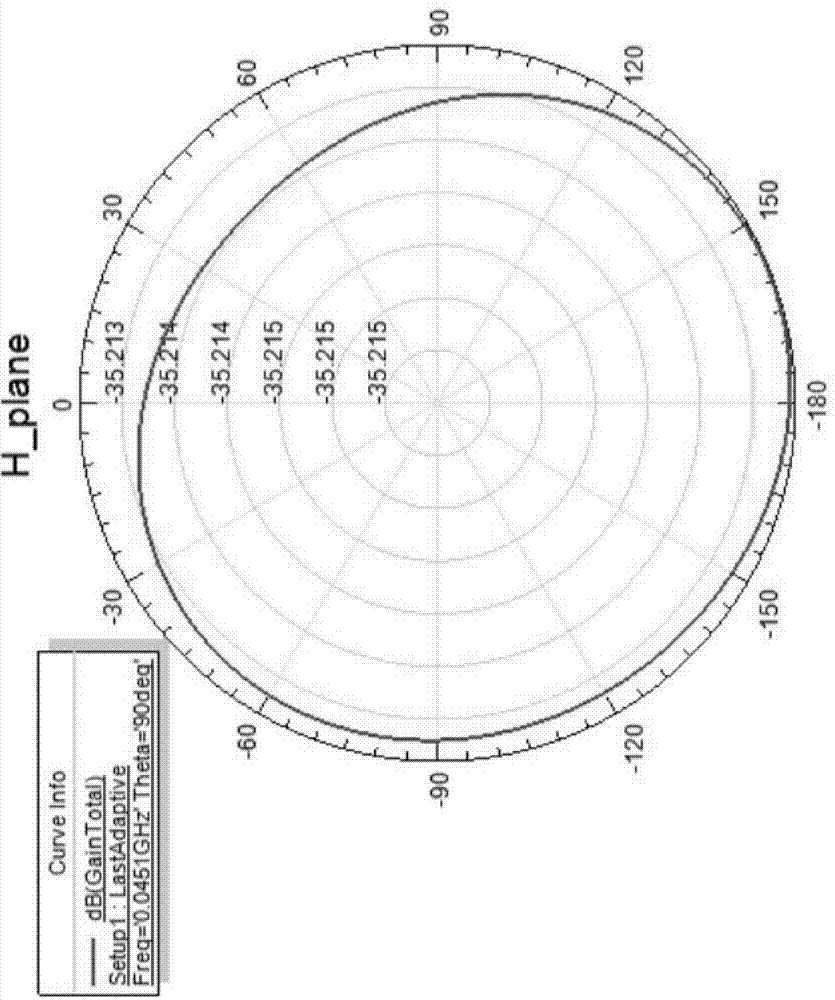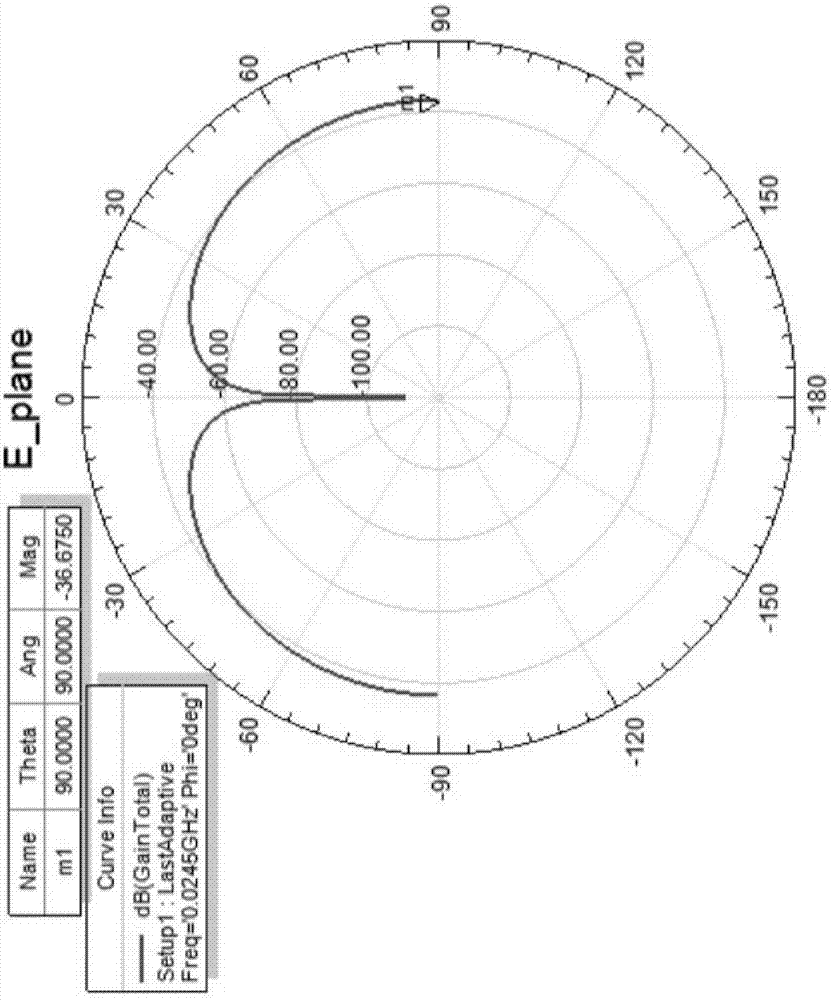Low-frequency loading antenna
An antenna and low-frequency technology, applied in the field of radio transceivers, can solve the problems of large loss, deterioration of antenna performance, and low antenna radiation efficiency.
- Summary
- Abstract
- Description
- Claims
- Application Information
AI Technical Summary
Problems solved by technology
Method used
Image
Examples
Embodiment 1
[0028] A low frequency loading antenna comprising:
[0029] Monopole antenna, the feeder is connected to the monopole antenna, the length of the monopole antenna is 360mm, the radius is 7.5mm, and the distance between the radiation boundary and the antenna is 375mm;
[0030] a lumped loading part, the lumped loading part is connected in series with the monopole antenna;
[0031] Impedance transformer is used to realize that the impedance of the feed end of the monopole antenna is equal to the characteristic impedance of the feeder line. In this embodiment, the (needle) impedance transformer whose model is AT&T is selected for use;
[0032] Wherein, the lumped loading part includes an inductor and a resistor, which are connected in series with the monopole antenna. The parameters of the inductor and the resistor are 1.73 uH for the inductor and 2.12 kΩ for the resistor.
[0033] The reactance of the monopole antenna is capacitive, so if the inductance L and the resistance R ar...
Embodiment 2
[0041] Compared with Embodiment 1, the difference is that the parameters of the inductance and resistance are that the inductance is 102.70nH, the resistance is 420Ω, and a sleeve is also included, and the sleeve is covered on the top of the monopole antenna, and the top of the monopole antenna Connects to the inside of the sleeve.
[0042] According to the transmission line theory, a terminal short-circuit line with a total length not greater than a quarter of the wavelength can be used as an inductive load, and its equivalent reactance value can be calculated by the following formula:
[0043] wxya in =jZ 0 Tanβl
[0044] The sleeve can be regarded as a terminal short circuit, which is equivalent to an inductive load loaded on the top of the antenna. And because the monopole antenna is an antenna with capacitive impedance, the loading of the sleeve can just offset a certain capacitive reactance, thereby reducing the resonant frequency of the antenna and improving the impe...
Embodiment 3
[0046] Compared with Embodiment 1, the difference lies in that the inductance is an adjustable inductor, and the resistor is a sliding rheostat. In this way, when the monopole antenna is deformed within a certain range (such as being hit or broken), the present invention can still work normally by adjusting the parameters of the inductance and resistance.
PUM
| Property | Measurement | Unit |
|---|---|---|
| Inductance | aaaaa | aaaaa |
| Resistance | aaaaa | aaaaa |
| Inductance | aaaaa | aaaaa |
Abstract
Description
Claims
Application Information
 Login to View More
Login to View More - R&D
- Intellectual Property
- Life Sciences
- Materials
- Tech Scout
- Unparalleled Data Quality
- Higher Quality Content
- 60% Fewer Hallucinations
Browse by: Latest US Patents, China's latest patents, Technical Efficacy Thesaurus, Application Domain, Technology Topic, Popular Technical Reports.
© 2025 PatSnap. All rights reserved.Legal|Privacy policy|Modern Slavery Act Transparency Statement|Sitemap|About US| Contact US: help@patsnap.com



